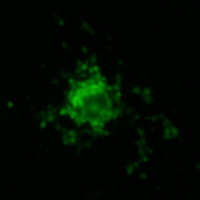Histochemistry for nanomedicine: Novelty in tradition

All claims expressed in this article are solely those of the authors and do not necessarily represent those of their affiliated organizations, or those of the publisher, the editors and the reviewers. Any product that may be evaluated in this article or claim that may be made by its manufacturer is not guaranteed or endorsed by the publisher.
Accepted: 23 December 2021
Authors
During the last two centuries, histochemistry has provided significant advancements in many fields of life sciences. After a period of neglect due to the great development of biomolecular techniques, the histochemical approach has been reappraised and is now widely applied in the field of nanomedicine. In fact, the novel nanoconstructs intended for biomedical purposes must be visualized to test their interaction with tissue and cell components. To this aim, several long-established staining methods have been re-discovered and re-interpreted in an unconventional way for unequivocal identification of nanoparticulates at both light and transmission electron microscopy.
How to Cite

This work is licensed under a Creative Commons Attribution-NonCommercial 4.0 International License.









